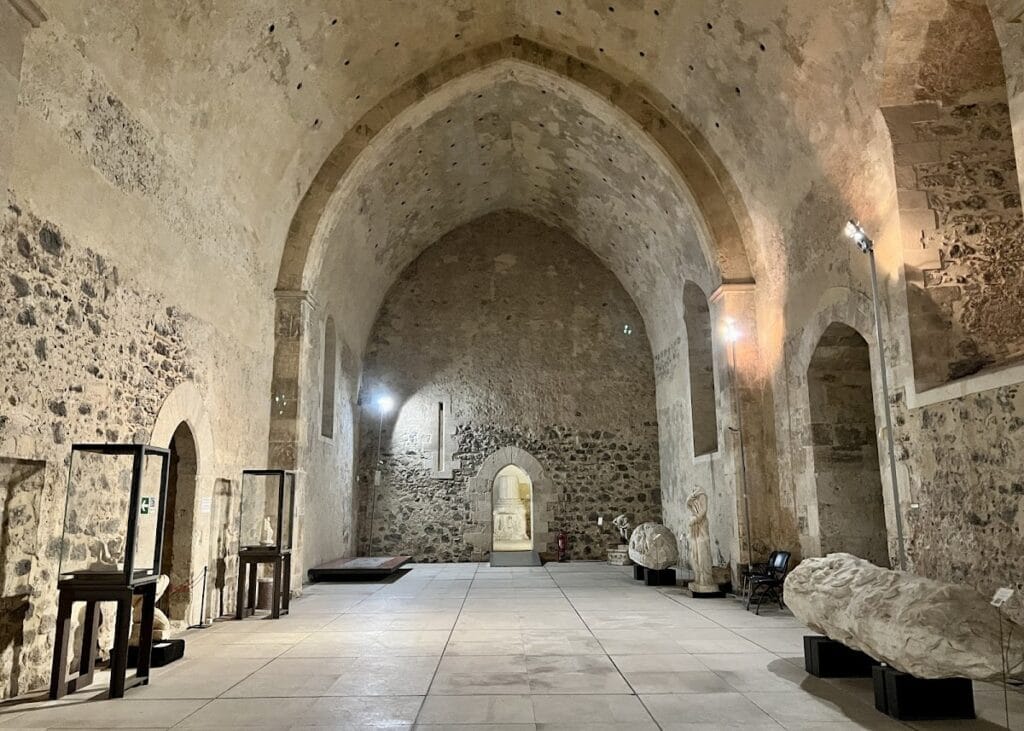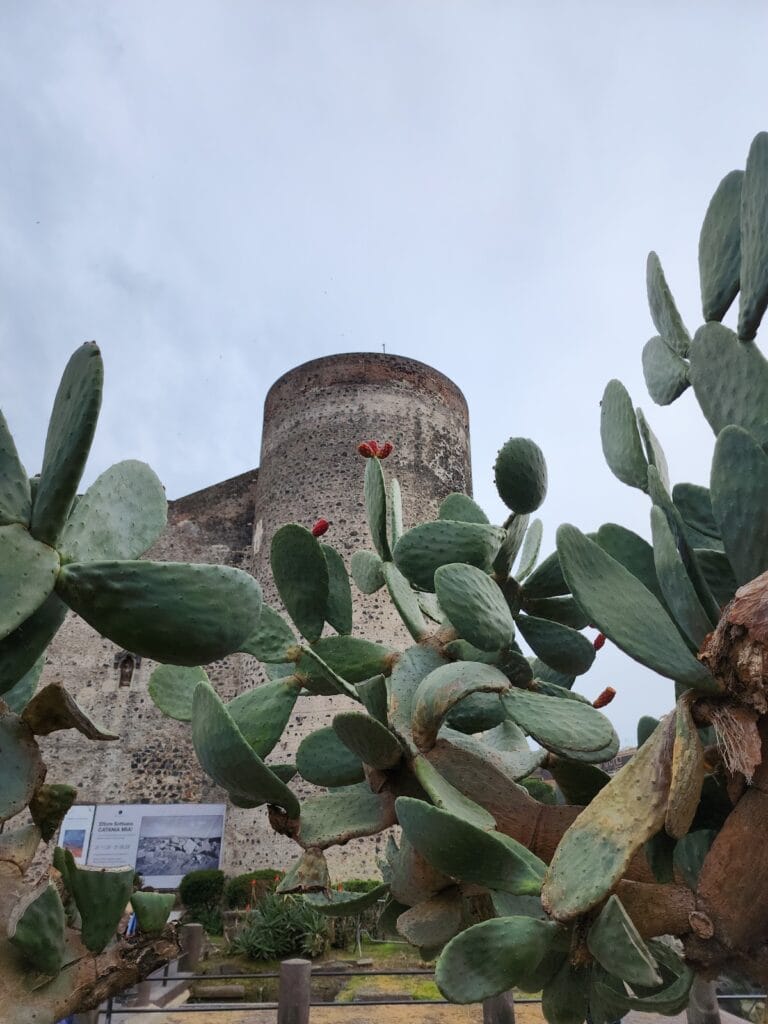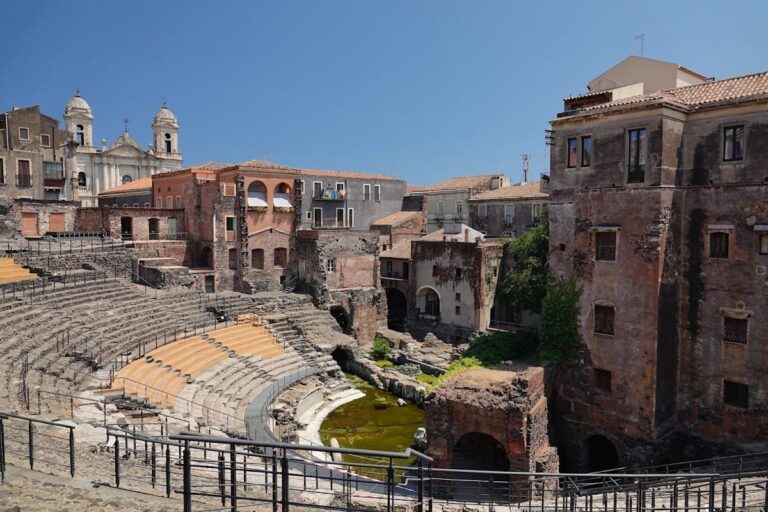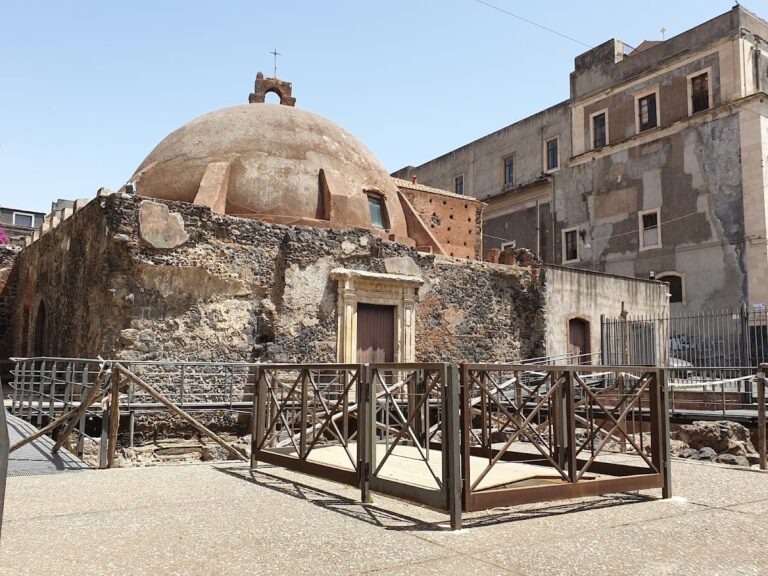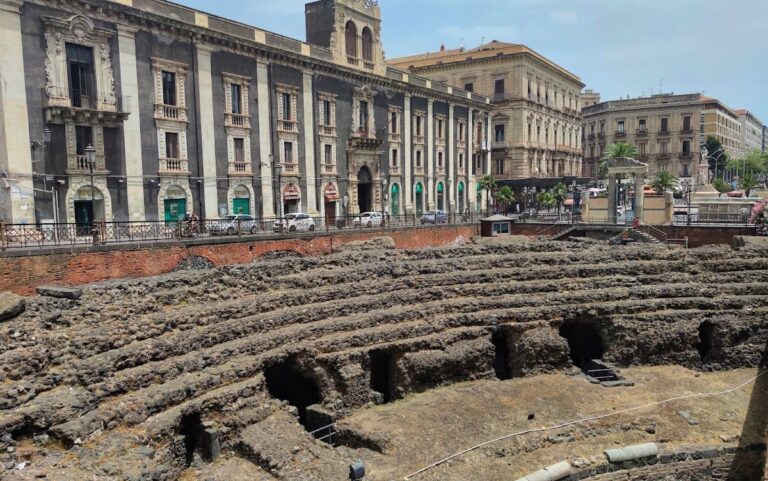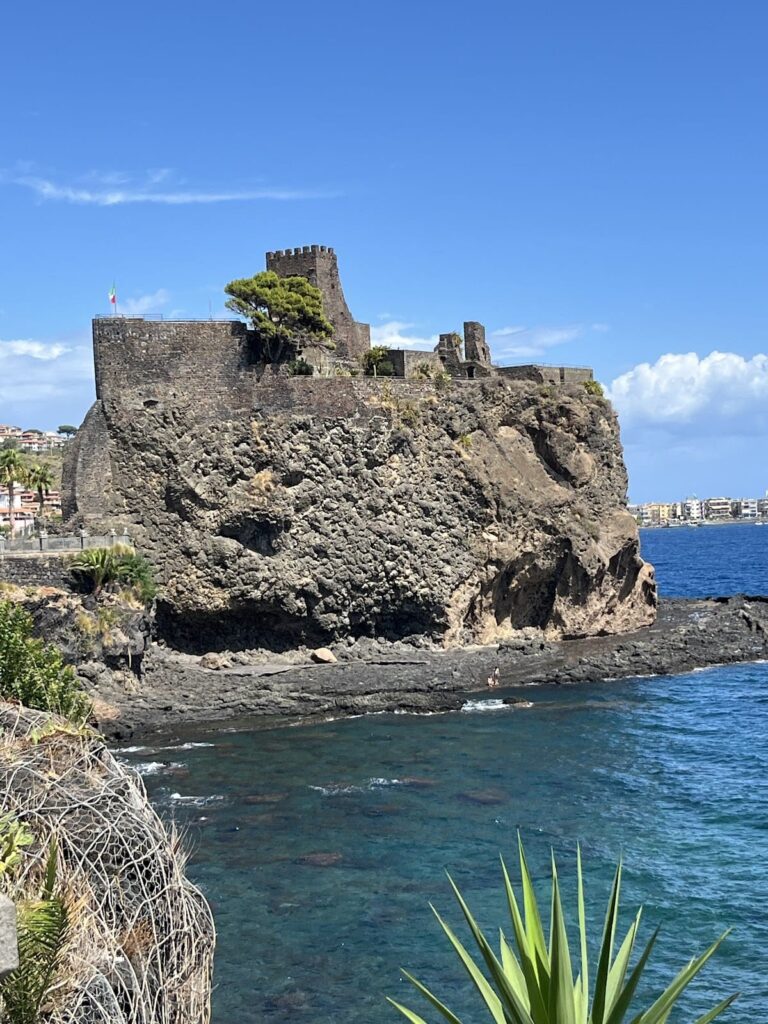Castello Ursino: A Medieval Fortress and Museum in Catania, Italy
Visitor Information
Google Rating: 4.4
Popularity: High
Google Maps: View on Google Maps
Official Website: www.comune.catania.it
Country: Italy
Civilization: Medieval European
Remains: Military
History
Castello Ursino is located in the city of Catania, Italy. It was built by the Holy Roman Emperor Frederick II from the Hohenstaufen dynasty during the mid-13th century as a royal fortress for the Kingdom of Sicily.
Construction of the castle took place between 1239 and 1250 under Frederick II’s direction. It was designed by military architect Riccardo da Lentini as part of an extensive defensive system along eastern Sicily’s coastline. The castle’s primary purpose was to assert imperial authority and protect Catania, the kingdom’s capital at the time. Positioned originally on a cliff overlooking the Ionian Sea, it was a strategic point guarding both the city and the maritime approaches.
In the late 13th century, Castello Ursino became an important political center during the Sicilian Vespers uprising, a rebellion against Angevin rule. In 1295, the Sicilian Parliament convened within its walls to depose James II of Aragon and declare Frederick III as king. The following year, the castle fell to Robert of Anjou but was soon reclaimed by Aragonese forces. It remained a royal residence for several rulers, including Frederick III and his successors Peter II, Louis, Frederick IV, and King Martin I. The castle was also notable for an event in 1392 when Queen Maria was abducted there to prevent her marriage to Gian Galeazzo Visconti.
As political power shifted and gunpowder artillery rendered traditional fortifications less effective, the castle’s military role diminished. When Catania ceased to be the capital, Castello Ursino was converted into a prison. Its robust structure allowed it to withstand the catastrophic earthquake of 1693, which destroyed much of the city. Furthermore, volcanic activity, particularly the Mount Etna eruption of 1669, altered the landscape by pushing the shoreline nearly one kilometer away and filling the surrounding moat with lava.
In the 20th century, the city of Catania acquired the castle in 1932 and undertook restoration efforts before reopening it as a civic museum in 1934. The museum’s collections originated largely from private families and cover periods from Classical antiquity onward. Later restorations, completed in 2009, enhanced the preservation of both the historical fabric and the displayed artifacts. Throughout its varied use, the castle’s ground-floor walls have preserved prisoner graffiti in several languages, dating back to the early 16th century, offering insight into its period as a detention facility.
Remains
Castello Ursino is built on a square plan, with each side measuring roughly 50 meters, showcasing its sturdy configuration as both fortress and palace. Its lava stone walls employ the opus incertum technique, which involves irregularly shaped stones carefully fitted together, giving the structure strength and durability. These walls are approximately 2.5 meters thick and rest on scarped, or sloping, foundations that make the base wider and enhance stability, especially visible on the southern side near the former moat.
The castle’s four large corner towers stand about 30 meters tall and each measures around 10 meters across. These circular towers added defensive depth, and originally four smaller towers were placed between them; two of these survive today. The original medieval design likely lacked battlements, later added during Renaissance upgrades that also introduced additional fortifications such as the San Giorgio and Santa Croce bastions, a moat, and a curtain wall linking these defenses. The volcanic eruption of 1669 buried many of these external elements under lava, which raised the ground level and moved the castle inland.
Entry to the castle was through the northern side, where a drawbridge spanned the moat. Flanking walls guard this entrance, which features a niche above the door containing a sculpture of a Swabian eagle clutching a hare. This emblem symbolized Emperor Frederick II’s authority. On the southern side, a smaller “false door” provided access to a ramp leading down to what was once a sea landing, reflecting the castle’s original coastal position before volcanic activity reshaped the shoreline.
Inside, an open courtyard lies at the center of the building, surrounded by four large halls arranged symmetrically. These halls are divided into three sections, each covered by ribbed cross vaults supported by semi-columns decorated with leaf motifs, creating an interior reminiscent of a gothic temple. Spiral staircases located within the northern and southern semi-towers provided access between floors, facilitating movement while maintaining defensive security. The castle’s design balances the dual functions of royal residence and fortress.
Restoration work has revealed Renaissance features such as a pentagonal star-shaped window made from black lava stone on the eastern wall. Parts of the 16th-century bastions survive alongside a historic guardhouse. On the castle’s ground floor, areas once subdivided into small prison cells known as dammusi remain. The thick walls in these spaces display hundreds of prisoner inscriptions and graffiti in Sicilian, Latin, and Spanish. These marks include names, personal reflections, religious symbols, and heraldic devices, some dating back to at least 1526, offering tangible evidence of the castle’s use as a place of confinement.
The museum occupying the castle showcases an extensive collection. Artifacts include Roman mosaics, statues such as a figure of Hercules, mythological friezes, and a variety of clay and bronze figurines from different ancient cultures. Marble reliefs, including a 5th-century BC depiction of the goddesses Demeter and Kore, highlight the classical heritage preserved here. Additional exhibits feature Byzantine icons, medieval keystones, and Renaissance artworks by renowned painters like El Greco and Pietro Novelli. The museum also houses a rare surviving copy of Caravaggio’s “Nativity with St. Francis and St. Lawrence,” along with 19th-century portraits, Chinese ceramics from the 18th century, historical violins by Andrea Amati, and local ceramics from Caltagirone.
Overall, Castello Ursino provides a layered view into Sicily’s history through its enduring architecture, its adaptation over centuries from fortress to prison to museum, and through the rich collections it now shelters.


